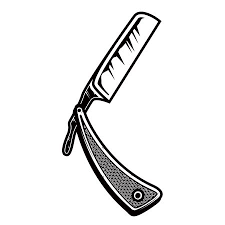As days blend into months, the years hardly seem to leave any trace of remembrance. From the dusty roads and cranky matadors to the smell of nun-chai; threading through the nostalgia that the storyteller brings about. These are parts of our lives that we instinctively connect with our identity. Kashmiri folk-tales (lukh kath) and folk- beliefs (lukh pach) are a tradition, welcomed anew with each season, a different genre, a different touch.
In the present day, where a naevid (barber) shop is related to a widely male-dominated space, it used to be the hub of gossips and fables, consisting of a wide range of beliefs and superstitions that upheld our social life. And to add to this, the barber is part of the folk-tale, ‘Chalakh Naevid’, too!
As it happens, there lived a naevid, though poor, he was bright and keen. Before long, he decided to put an end to his misery and sought out the yachh, the night-dwelling demon, for it was said that he who had the hat of the demon, could make him do anything, though the hat could be kept safe only under a water pot or vokhul kajwuthh (mortar and pestle). On a cold night, he waited with a dish of lentils and rice, the khechyer, ready to lure the demon out of its dwelling. Finally, after some struggle, he got his hands on the precious hat, the yachh now his slave! At last, came the riches and comforts the naevid had so longed for, but little did he know that the lazier he grew, the more watchful did the yachh become for an opportunity to get his hat back and take his revenge. One eventful day, while the barber was away, the yachh pleaded with the barber’s mother, who out of pity handed it over to him. But the demon did not run away just yet! With fervour, he turned all of his doings upside down. No longer was the naevid a master of riches and gold. All that was left to master, were the razors and the rags. The glum barber went back to cutting hair and telling stories, though this time of his own misfortune.
Hayan Naim
12th
Luk e Kathe te Naevid
